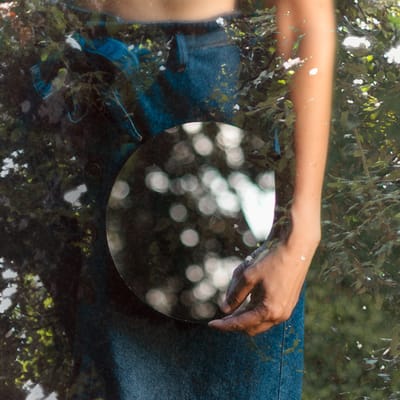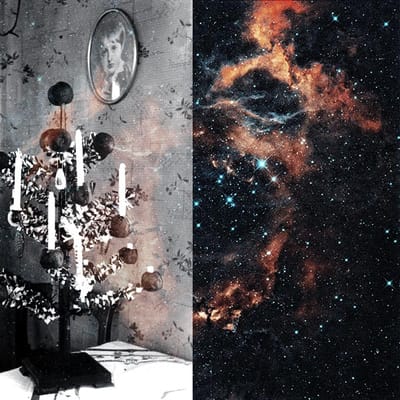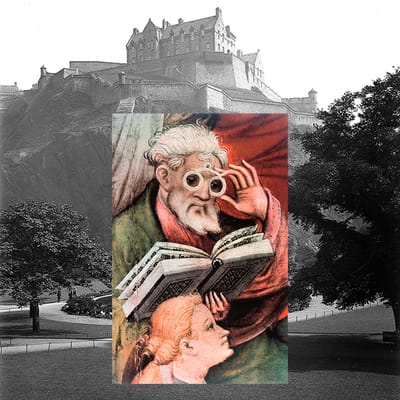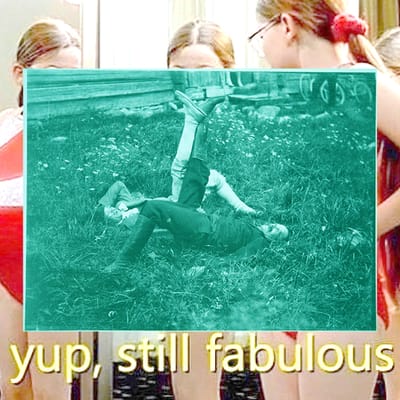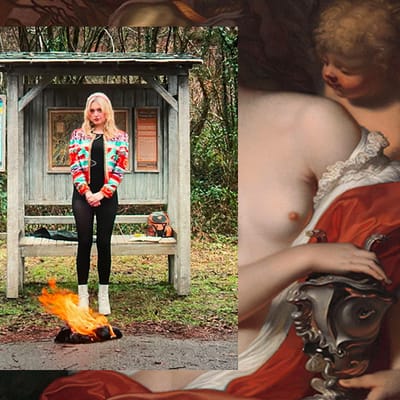#2022.9 Settembre
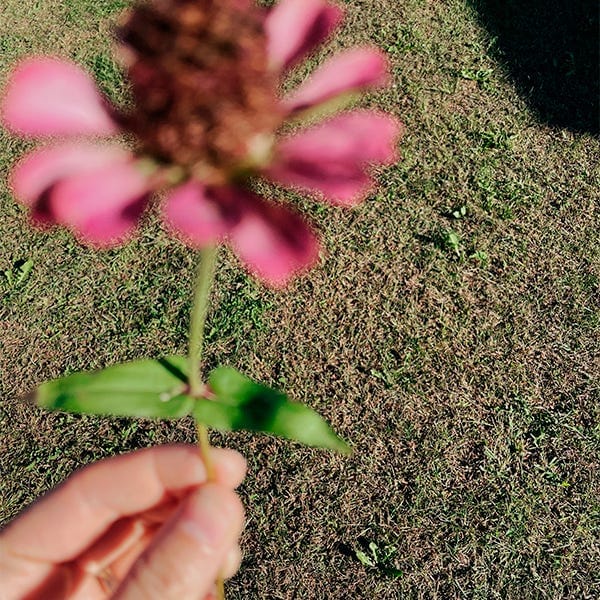
Questo sarà un riassunto bello intenso, non ho realizzato la quantità di materiale che ho messo fuori questo mese fino a quando non l’ho guardato tutto insieme -_-
Ovvio che potete spiluccare i testi qua e là cercando quello che vi ispira, non è che interrogo, ma da ottobre mi trattengo, promesso.
L’equinozio ha segnato la fine dell’estate. Qui l’aria è fredda e i pastori stanno transumando mucche, pecore, capre e cavoli giù per la valle. Una volta questo era anche un periodo di feste, organizzate un po’ per svuotare gli alpeggi e un po’ per ringraziare chi di dovere per la bella stagione e il buon raccolto. Di questi grandi eventi non c’è quasi più traccia. Sarà che con i tempi che corrono non c’è molto da ringraziare: dopo le elezioni riesco solo a pensare che chi semina vento raccoglie tempesta.
Ma non riesco nemmeno a immaginare di andare verso l’inverno con questa cappa di pesantezza addosso. Dovrebbe essere qualcosa che scalda e protegge dalla pioggia di traverso. E che magari ti fa anche volare, come quella di Doctor Strange, perché no?

Oggi sono andata a correre, continuava a tornarmi in testa una cosa che ho scritto nell’articolo di ieri riguardo al sistema di economie emotive orientate all’altro dove i momenti per sé stessi sono stati demoliti dall’ansia di farsi vedere, e validare, dagli altri. Ce l’avevo un po’ a morte con la società e la cultura che sento spingere più in questa direzione, invece di agevolare la nascita di spazi personali sicuri.
Quando corro ho questo orologio che tiene traccia degli allenamenti e dei percorsi. A fine allenamento lo fermo e salvo tutti i dati. L’ho cambiato da poco. Comunque, premo stop e aspetto di vedere la schermata di riepilogo con tutti i fantasmagorici dati sulle mie molto meno fantasmagoriche prestazioni. Invece questo (l’orologio intendo), mi chiede: come ti senti? E cinque faccine da molto triste a molto felice a guardarmi.
La schermata sta lì a fissarmi paziente, aspettando una risposta. Ohibò, non me l’aspettavo. Non c’è niente di più “competitivo” di un’app sportiva dove ogni parte di te che può essere misurata in maniera oggettiva, dal numero di passi che fai al battito cardiaco al sonno, è messa a confronto con millemila altre e con un ideale. Beh, è quello che deve fare, in fondo.
Ma ci sono parti di noi che non possono essere misurate in questo modo, eppure influenzano lo stesso chi siamo, cosa facciamo e come lo facciamo. La motivazione, l’umore, lo stato psicologico. Forse in un futuro troveranno un modo per registrare e misurare alla perfezione anche queste informazioni, ma per il momento c’è un unico modo per farlo: chiedere.
Non possiamo leggere nella mente degli altri e nemmeno capire come se la stanno passando dall’aspetto esteriore o dal comportamento. C’è chi è più attento e sensibile, magari ci azzecca più della media, ma si tratta sempre di ipotesi con un certo margine di errore.
Ed eccomi qui, in questi giorni sempre più bui, ferma sotto la pioggia con le braghette corte, a dire all’orologio che mi sento molto bene mentre mi passa per la testa una visione del mio futuro e dei prossimi progetti.
Suona come una risposta semplice a una domanda banale, ma che importa? L’importante è questo microscopico spazio dove l’interesse è rivolto a me, ma alla me-io, non alla me che si può misurare, ma a quello che io voglio affermare e buttare fuori nel mondo.
Come ti senti? È una domanda a volte scema, difficile, spesso non c’è nemmeno una risposta o non è possibile darla. Ma la risposta conta davvero? Potrei rispondere patate e cincillà. Questa domanda è potente perché crea l’occasione di uno spazio di libertà per la persona. Dove può fare, dire ed essere quello che vuole.
E si, lo so che ci sono tutte le risposte socialmente accettabili e che spesso è una domanda di rito per spezzare il silenzio (anche se di solito le domande sono, come va? Come stai? non come ti senti? È diverso…). Ma così come posso essere libera di rispondere parrucche e ratafià posso anche dire sto bene solo per liquidare l’interlocutore se non mi va di parlare. Il punto è che il come ti senti? è l’inizio dello di un istante di libertà.
E non so perché, ma a me questa cosa ha scaldato il cuore e mi ha caricata a molla. Anche se ci fosse solo una possibilità su un milione di miliardi di futuri possibili che le cose andranno bene, lavorerò per quello.
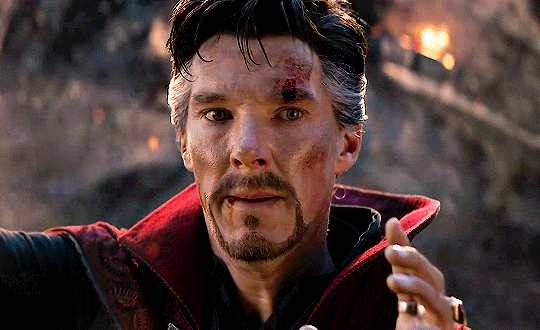
Chiedo scusa per tutte le citazioni dai film Marvel, ma Benedict Cumberbatch per me sta bene ovunque lo si metta. Anche in un discorso sulla fotografia d’autore.
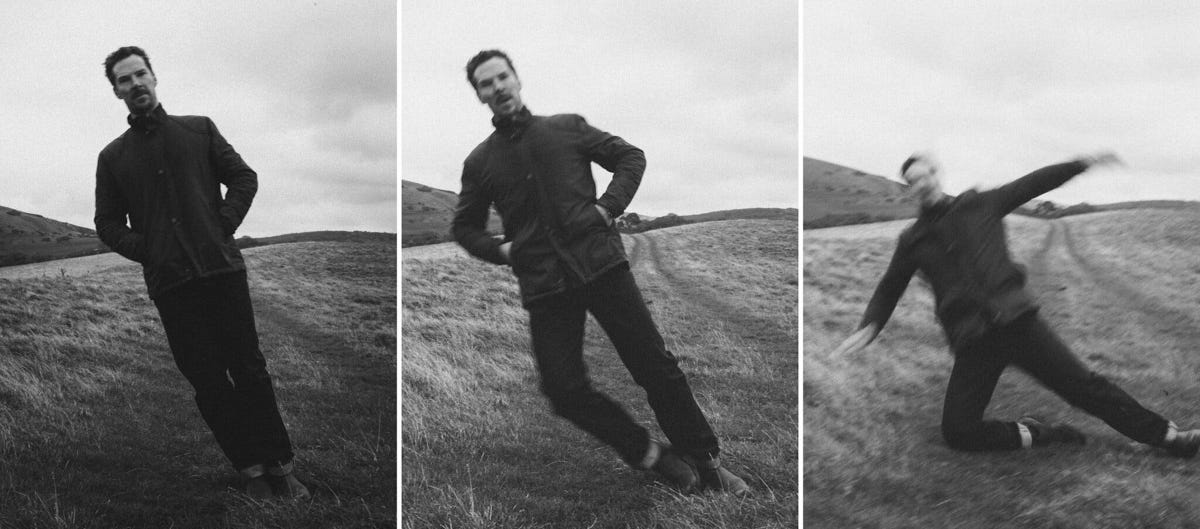
Visto? Che vi dicevo? È come il sale, un pizzico ci sta bene ovunque.
Ma lasciamo da parte i miei idoli e passiamo ai ringraziamenti per voi. Nell’ultimo mese Making Pictures è cresciuta ancora, siamo quasi all’anno!
È la prima volta che porto avanti un progetto del genere per così tanto tempo. Sono abituata a lavorare senza grosso seguito e pubblico, ma ammetto, non sono sicura se sarei arrivata fino a qui senza di voi.
Sto progettando una piccola sorpresa per festeggiare l’anno, ma ne parleremo più avanti. Per il momento vi ricordo che potete iscrivervi, se non l’avete ancora fatto, gratuitamente o in abbonamento. Potete condividere Making Pictures con chi volete e anche regalare un abbonamento.
Ma potete anche non fare nessuna di queste cose e continuare a leggere e condividere Making Pictures come se fosse un blog, senza iscrizioni. Come vi trovate comodi va bene :)
Grazie per il vostro supporto!
Argomenti trattati
Visto il periodo leggero, questo mese ci siamo buttati a testa bassa sul tema degli stereotipi. Andremo avanti a fine anno perché c’è un sacco da dire ma sopratutto perché ritengo sia importante farlo.
Sono consapevole di tutti i miei limiti, bias, delle cose che non so e della mole di roba importante che dovrei conoscere di cui non ho nemmeno la minima idea. Infatti non sono qui per spiegare qualcosa, ma per srotolare pensieri e costruire ragionamenti. Magari per poi smontarli e rivederli. Come una casa, che con il tempo da nuova diventa vecchia, e ha sempre bisogno di manutenzione.
Quello della fotografia è un ecosistema magnifico ma con i suoi problemi. Nei primissimi anni dalla sua “nascita” era un’attività interessante per pochi nerd, una via di mezzo tra chimica, alchimia e sperimentazione. Passa qualche decennio, le tecniche si affinano, e arriva anche la consapevolezza che questa nuova forma di linguaggio visivo è qualcosa di potente, facilmente producibile e trasmissibile (più di un dipinto, per esempio), in grado di influenzare atteggiamenti e comportamenti. E così la fotografia comincia a diventare uno strumento importante scopi diversi, giusti o sbagliati, dipende da chi la utilizza.
Punto primo: Tutti siamo portatori di stereotipi. Questo non vuol dire necessariamente che possediamo gravi pregiudizi negativi o mettiamo in atto comportamenti discriminatori evidenti. E anche se fosse, rimane comunque il rischio di non accorgersene o non riconoscerlo come un problema eccessivo. Perché il nodo più difficile da sciogliere è proprio lì: gli stereotipi “cattivi” e i pregiudizi sono trasparenti, se non addirittura assimilabili a comportamenti naturali e corretti, a chi ne è portatore. Gli stereotipi sono strutture mentali attraverso le quali filtriamo e diamo senso all’informazione sociale.
Una macchina fotografica, da sola, non fa fotografie: registra. Quello che manca alla macchina (o esiste in maniera molto rudimentale, ne riparleremo quando le AI saranno più complesse) è il piano mentale e inconscio che guida le decisioni e i giudizi di chi fotografa.
Possiamo dire, semplificando per chiarezza, che quando fotografiamo attraversiamo fasi di riconoscimento e di giudizio. È un processo inconscio e automatico, non si può evitare. Quando ci troviamo di fronte ad una fotografia fatta e finita, nostra o di altri, c’è qualcosa che arriva dal riconoscimento di un modello che abbiamo in testa, mentre altre scelte dipendono dalla valutazione che abbiamo di quello stereotipo. Non sempre è possibile individuare e separare le componenti di questo processo, così come non è possibile separare i tuorli dallo zucchero una volta che sono montati. Ma a volte più è semplice intuirlo: magari perché il fotografo vuole che il suo giudizio arrivi in maniera chiara (come nel caso del ritratto di Arnold Newman, Alfred Krupp, 1963).
A volte la fotografia ci permette di entrare in spazi fisici, sociali e psicologici altrimenti inaccessibili. E in questi spazi ci arriviamo con tutto il nostro bagaglio di conoscenze ed esperienze e ne usciamo portando fuori qualcosa, le immagini, che è passato attraverso un filtro. Quali sono le tracce che lascio con questo passaggio?
Stereotipi, modelli e mappe sono generalizzazioni e, per questo, hanno dei limiti. Riponiamo grande fiducia negli strumenti che utilizziamo, forse senza chiederci troppo come funzionino e fino a che punto siano validi e attendibili. Soprattutto in quelli che sono sempre con noi (o dentro di noi). Riuscire a mettere a fuoco e controllare i propri schemi mentali nella pratica può essere…un casino. I modelli sono comodi ed economici, in genere ci piace ripetere e confermare quello che già conosciamo.
Il linguaggio visivo può appiattire quello che abbiamo davanti dentro una categoria, creando caricature grottesche che diventano parte della nostra cultura. Ma la fotografia può anche aggiungere specificità e profondità.
Appunti e citazioni
«Formulate le vostre tesi nella maniera più brutale, ché, quando l’epoca va in riposo e pone fine al canto, voi siete rappresentati solo in ragione delle vostre frasi. Ciò che non esprimete non c’è». Gottfried Benn, Invecchiare come problema per artisti. Microgrammi 12, 2021.
«In uno dei suoi passaggi più profetici Nietzsche parla di “un’era satura di storia”. “Un’epoca incorre nella pericolosa disposizione intima dell’autoironia, e da essa in quella ancora più rischiosa del cinismo», si legge nelle Considerazioni inattuali; un “carnevale cosmopolitico”, ovvero una spettatorialità distaccata, avrà sostituito la partecipazione e il coinvolgimento. È la condizione dell'Ultimo Uomo nietzschiano: colui che ha visto tutto, ma che proprio l'eccesso di (auto)consapevolezza condanna all'indebolimento e alla decadenza». Mark Fisher, Realismo capitalista. NERO, 2018.
«THE WORLD OUTSIDE AND THE PICTURES IN OUR HEADS
[…] By fictions I do not mean lies. I mean a representation of the environment which is in lesser or greater degree made by man himself. The range of fiction extends all the way from complete hallucination to the scientists’ perfectly self-conscious use of a schematic model, or his decision that for his particular problem accuracy beyond a certain number of decimal places is not important. A work of fiction may have almost any degree of fidelity, and so long as the degree of fidelity can be taken into account, fiction is not misleading. In fact, human culture is very largely the selection, the rearrangement, the tracing of patterns upon, and the stylizing of, what William James called “the random irradiations and resettlements of our ideas.” [Footnote: James, Principles of Psychology , Vol. II, p. 638] The alternative to the use of fictions is direct exposure to the ebb and flow of sensation. That is not a real alternative, for however refreshing it is to see at times with a perfectly innocent eye, innocence itself is not wisdom, though a source and corrective of wisdom. For the real environment is altogether too big, too complex, and too fleeting for direct acquaintance. We are not equipped to deal with so much subtlety, so much variety, so many permutations and combinations. And although we have to act in that environment, we have to reconstruct it on a simpler model before we can manage with it. To traverse the world men must have maps of the world. Their persistent difficulty is to secure maps on which their own need, or someone else’s need, has not sketched in the coast of Bohemia». Walter Lippmann, Public Opinion, 1921. The Project Gutenberg.
«L’ontologia oggi dominante nega alla malattia mentale ogni possibile origine di natura sociale. Ovviamente, la chimico-biologizzazione dei disturbi mentali è strettamente proporzionale alla loro depoliticizzazione: considerarli alla stregua di problemi chimico-biologici individuali, per il capitalismo è un vantaggio enorme. Innanzitutto, rinforza la spinta del Capitale in direzione di un’individualizzazione atomizzata (sei malato per colpa della chimica del tuo cervello); e poi crea un mercato enormemente redditizio per le multinazionali farmaceutiche e i loro prodotti (ti curiamo coi nostri psicofarmaci). Che qualsiasi malattia mentale possa essere rappresentata come un fatto neurologico è chiaro a tutti. Ma questo non ci dice nulla sulle cause. Se per esempio è vero che la depressione generalmente comporta un basso livello di serotonina, allora quello che va spiegato è perché in determinati individui il livello di serotonina sia basso. Farlo però richiede una spiegazione sociale e politica [anche una spiegazione sociale e politica, nota mia. Mark Fisher è molto lucido e duro in Realismo Capitalista. Per quanto mi trovi d’accordo con quanto scritto in tutto il saggio, faccio fatica in questo momento a condividere al 100% il suo tono di voce e le sue posizioni nette]: ripoliticizzare la malattia mentale è un compito urgente per qualsiasi sinistra che voglia lanciare una sfida al realismo capitalista». Mark Fisher, Realismo capitalista. NERO, 2018.
«L’apparente “innocenza” della fotografia è parte del suo potere retorico, un potere moltiplicato in ogni riproduzione di quell’immagine, che noi vediamo come qualcosa che appare “così com’è”. Le fotografie dànno l’illusione di un accesso trasparente alla “realtà”, inteso come il vero “linguaggio” della fotografia». David Bate, Il primo libro di fotografia. Torino, Einaudi Editore, 2011.
«Barthes ha presupposto questa retorica di un’immagine distinguendo tra la denotazione e la connotazione di una fotografia. La “denotazione” è “ciò che vediamo”, ciò che può essere descritto come semplicemente “lì” nell’immagine. La “connotazione” è l’immediato significato culturale che deriva da ciò che viene visto, ma che di fatto non è nella fotografia. In pratica, noi operiamo raramente distinzioni simili, perché esse appaiono nello stesso istante come prestazioni ovvie della fotografia». David Bate, Il primo libro di fotografia. Torino, Einaudi Editore, 2011.
«La semplice distinzione tra denotazione e connotazione fatta poco fa mostra che il significato dato a un’immagine fotografica, la sua connotazione, dipende anche dalla cultura dell’osservatore.
[…] Questo passo dimostra che il significato di qualunque fotografia, la sua connotazione, non è mai interamente fissato. Di fatto, la conoscenza discorsiva che l’osservatore apporta all’immagine significa che le connotazioni di un’immagine sono sempre potenzialmente plurali. Come afferma Barthes, il significato di qualunque fotografia è polisemico». David Bate, Il primo libro di fotografia. Torino, Einaudi Editore, 2011.
«Our principal aim ha been to start a process of questioning». John Berger, Ways of Seeing. Penguin, 1972.
«But the essential way of seeing women, the essential use to which their images are put, has not changed. Women are depicted in a quite different way from men - not because the feminine is different from the masculine - but because the ‘ideal’ spectator is always assumed to be male and the image of the woman, is designed to flatter him». John Berger, Ways of Seeing. Penguin, 1972.
«For the first time ever, images of art have become ephemeral, ubiquitous, insubstantial, available, valueless, free. They surround us in the same way as a language surrounds us.
[…]
The art of the past no longer exists as it once did. Its authority is lost. In its place there is a language of images. What matters now is who uses that language for what purpose». John Berger, Ways of Seeing. Penguin, 1972.
«In 1990, I returned to Nicaragua with two filmmakers to document what had happened to the people in my earlier photographs. I learned that “Molotov Man” was Pablo Arauz, who was known as “Bareta” during the war, still identified himself as a Sandinista, and had ended up with a family and a pretty good job delivering lumber. (He owned his own truck)». Joy Garnett and Susan Meiselas, On the rights of Molotov Man, Appropriation and the art of context. 2007.
«In Hokusai (1760-1849) ho trovato: “Dall’età di sei anni ho avuto la mania di disegnare. Verso i cinquanta avevo pubblicato un’infinita quantità di disegni, ma tutto ciò che avevo fatto prima dei settantatré anni non è degno che se ne parli. Verso l’età di settantatré anni circa ho compreso qualche cosa della vera natura degli animali, delle erbe, dei pesci, degli insetti. Di conseguenza a ottant’anni avrò fatto ancora dei progressi, a novanta penetrerò il mistero delle cose, e quando ne avrò centodieci tutte le cose mie, anche una semplice linea o un punto, saranno cose vive”». Gottfried Benn, Invecchiare come problema per artisti. Microgrammi 12, 2021.
«Bisogna tenere sotto controllo tutta la rappresentazione visiva […] a causa della sua forte capacità di coinvolgere l’osservatore e di trascendere la legge naturale. Essa è inerte, ma può diventare viva; è muta, ma ha una sua presenza e può muoversi e parlare […]. Può darsi che questo sembri irrazionale a quanti temono i rapporti tra forma e sguardo; ed è un’irrazionalità che una società razionale deve controllare». David Freedberg, Il potere delle immagini. Il mondo delle figure: reazioni e emozioni del pubblico. Einaudi, edizione 2009.
«Così, anche se siamo ogni giorno circondati da fotografie in una quantità di sfere culturali, molto raramente ci accorgiamo della loro presenza. Quale ruolo riveste nelle relazioni sociali questo ambiente di immagini fotografiche, nel modo in cui vediamo il mondo, gli altri in generale, o anche noi stessi?
[…] Quando cominciamo a cercarle, troveremo fotografie idealizzate, ovunque, utilizzate per suscitare il desiderio e l’appetito del consumatore, e non solo in campo alimentare.
[…] Il ruolo ricoperto dalle fotografie nella nostra vita quotidiana è importante, tanto che ciò che ci è permesso vedere è una faccenda che riguarda il giudizio politico e il potere decisionale delle istituzioni sociali». David Bate, Il primo libro di fotografia. Einaudi, 2017.
«La fotografia è essenzialmente una disciplina analitica. Mentre un pittore inizia con una tela vuota e costruisce un’immagine, un fotografo si trova davanti il disordine della realtà e deve scegliere un’immagine. Un fotografo in piedi davanti a case, strade, persone, alberi e manufatti di una cultura impone un ordine sulla scena che ha di fronte: semplifica il caos dandogli una struttura e impone quest’ordine scegliendo un punto d’osservazione, un’inquadratura, un momento per lo scatto e un piano di messa a fuoco. […] Portando l’ordine in questa situazione, un fotografo risolve un’immagine piuttosto che comporla». Stephen Shore, Lezioni di fotografia. La natura delle fotografie. Phaidon, 2007.
«Sometimes I meet young artists and it becomes clear that for some the main motivation is getting a show in Chelsea. It strikes me that this is very different to the way it was for me, which was that I wanted to understand photography and the world and myself. To do that, I produced work. The work that was shown was like a by- product, but never the purpose of my photography. The thought process doesn't even have to be conceptual or intellectual. It can be visual, or a layer of thought that's wordless. I'm always exploring some question or other, but it may not even be formulated as such. I believe the work produced by most established artists, was produced as a by-product of their personal explorations». Stephen Shore in Anne-Celine Jaeger, Image Makers. Image Takers. Thames&Hudson, 2010.
«A former student of mine just had his first show and was selling prints for $9,000 and that may affect what he does. I’m delighted photographers can now make a living from selling their work, but I can see that unless you’re sure of yourself, you might get swayed by the market». Stephen Shore in Anne-Celine Jaeger, Image Makers. Image Takers. Thames&Hudson, 2010.
«One summer day when I was about nine years old, I was riding in the car with my mom and my sister when I observed a motorcycle with a sidecar coming up alongside us. I exclaimed, “Wow, look at the mom and dad and their kid!” thinking that my mom and sister would find it as cool as I did.
My mother’s response surprised me. “What do you see?” she asked. I repeated “A dad, a mom, and their kid,” thinking she didn’t hear me. Once ore my mother asked me, “ What do you see?” Thoroughly confused, I struggled for several minutes, feeling like she missed the point and quietly wondering if the sight wasn’t as neat as I thought it was. She asked the question again, and as I pondered what I soon perceived as a riddle, my sister hesitantly said, “A man, a lady and a child.” “Yes,” replied my mom. “You assumed you knew who they were, but it wasn’t what you could see.” “Oh”, I said. And thus I learned the first of many lessons on the role assumptions play in how we view the world around us.
[…] what we see is influenced by our individual perceptions and perspectives at a given point in time». Sharon J. Washington in Marvin Heiferman, Photography changes Everything. Aperture, 2012.
«Light can be soft and affectionate, or a brutal and ugly tool, which can be used on someone you don’t like». Eugene Richards in Anne-Celine Jaeger, Image Makers. Image Takers. Thames&Hudson, 2010.
«[…] l’impressionante rassomiglianza nei ritratti di (Thomas) Gainsborough era ottenuta lasciando “molte parti importanti indeterminate”. […] la tecnica di quest’ultimo invita lo spettatore a riempire, con la sua immaginazione, i dettagli mancanti, permettendo così una maggiore verosimiglianza dei tratti della persona dipinta nella mente dello spettatore, ben al di là di quanto è di fatto conseguibile in qualsiasi dipinto».David Bate, Il primo libro di fotografia. Einaudi, 2017.
«I want to show things you might not see in normal life. I make normal things appear special. I want people to look at life in a new and different way, but it always has to be based on reality. It’s important that you don’t pass judgement, and leave space for interpretation. […] I usually find that portraits work best if you don’t have a specific idea of what you are looking for. You have to be open for anything to happen. If you try and force something, there is always the danger of a picture becoming too one-dimensional». Rineke Dijkstra in Anne-Celine Jaeger, Image Makers. Image Takers. Thames&Hudson, 2010.
«Lots of people say they don’t understand contemporary art, but it’s not like people actually understand the religious and symbolic background of paintings from the seventeenth and eighteenth centuries. Just because something is represented in a figurative way, people think they understand it. It’s also a big mistake in photography. People generally think, “I can judge this image because I can see what’s in the picture and I could take this picture myself”, but it doesn’t happen that often that people actually figure out what it is that the artists want to show us or that they develop a sophisticated way of seeing. […] You can only learn to see by really looking at images and dealing with the impact. they have. You have to engage with a photograph, even if you can’t explain it properly. It happens to me that I’m fascinated by a piece of work but can’t explore it all the way. In fact, the best works are often the ones that make you feel uneasy, or uncertain». Dr Inka Graeve Ingelmann in Anne-Celine Jaeger, Image Makers. Image Takers. Thames&Hudson, 2010.
«Often viewers project their own embarrassment and discomfort when they look at difficult images». Mary Ellen Mark in Anne-Celine Jaeger, Image Makers. Image Takers. Thames&Hudson, 2010.
«Using photographs as educational resources presents particular challenges and must be done with care. There is always more than face value in any photo […] photographs are not objective; they can easily tell as many lies as truths.
As America Native people struggled to adapt to catastrophic changes to their old ways of living, photographers took thousands of studio portraits and made what they believed to be neutral ethnographic images of the “vanishing Indian.” As Native cultures bent under pressure to assimilate into mainstream America, photographers routinely captured images that compared the new “civilized” Indian to the tradition-bound “savages”.
[…]
Photographers also accompanied government expeditions to the West where they documented traditional cultures, leading the way for tourists and commercial photographers who followed, carrying their cameras and preconceptions into Native American communities. Their efforts generated a legacy of photographic images […] that can serve today as rich educational resources. But if used carelessly, they can also fuel romanticized and stereotypical perceptions […]». Edwin Schupman in Marvin Heiferman, Photography changes Everything. Aperture, 2012.
«It is important to recognize all people, especially the poor and disabled. They have the right to be seen and heard also». Mary Ellen Mark in Anne-Celine Jaeger, Image Makers. Image Takers. Thames&Hudson, 2010.
«In its infancy, photography was practiced by scientists and alchemists, not artists. A photographer didn't have to be enrolled in the hallowed halls of the academy; she could cook it up in the kitchen». Eva Respini, On Feminism, Aperture, 2016.
«All photographers have to do, is find and catch the story-telling moment». Alfred Eisenstaedt, About Photography Blog, 2020.
«The excitement of the war being over, plus I had a few drinks, so when I saw the nurse I grabbed her, and I kissed her.”
[…]
“I felt he was very strong, he was just holding me tight, and I’m not sure I — about the kiss because, you know, it was just somebody really celebrating. But it wasn’t a romantic event. It was just an event of thank God the war is over kind of thing,” adding that “It wasn’t my choice to be kissed. The guy just came over and kissed or grabbed me.” She said». George Mendonsa and Greta Zimmer Friedman, About Photography Blog, 2020.
«Ma la fotografia non è anche una forma di stupidità?». Luigi Ghirri, Lezioni di fotografia. Quodlibet, 2009.
«Many proponents of eugenics were in positions of authority at universities and colleges, professional organizations, museums and industry, and they gave credibility and clout to the movement, which was popularized and disseminated in newspapers and magazines, lectures, books and exhibitions.
The picture by Weegee on the following page would have offended the sensibilities of the starchy, self-important eugenicists. The winners at eugenic affairs were usually posed by local photographers using the prim conventions of studio portraiture. Frilly white dresses, spotless sailor suits, and fluffy bonnets were the preferred costumes. If naked, the child’s body was depicted as perfectly still and unperturbed. And all the children were well behaved and wore sweet expressions rather than the distorted grimace of infant distress. The point of the eugenic portrait was to convey the calm, elevated character of the “well-born,” and to advance the notion that only such superior people should reproduce». Carol Squiers in Marvin Heiferman, Photography changes Everything. Aperture, 2012.
«But the editors missed an opportunity to draw a link between the quest to create and judge the “perfect baby” and the growing menace of eugenics both in the U.S. and in Germany. […] Eventually, over sixty thousand Americans were subjected to involuntary sterilization in the effort to prevent a less-than-perfect baby from being born to less-than-perfect parents». Carol Squiers in Marvin Heiferman, Photography changes Everything. Aperture, 2012.
«I also started working with photography because I was very pleased with a picture I had made. It was a photo of woman holding a cigarette. The combination of woman and cigarette was a radical break from the norms of Soviet photography of that epoch: you were only supposed to show Soviet women as an ideal. If naturalism didn’t coincide with the ideal, it was simply not to be made public». Boris Mikahilov in Anne-Celine Jaeger, Image Makers. Image Takers. Thames&Hudson, 2010.
«Did you have access to international photographers’ work?
Not really. Sometimes we’d see a Cartier-Bresson or an American colour photographer, but we only got to see “normal” things, nothing that was very deep. But I understood after a while that it wasn’t important for me to look at foreign photographers’ work. They have a really strong aesthetic, which corresponded to the Western environment and technology and which, I guess, was in direct contrast with my life. In my life there is dirt, things are broken. Even the way foreign organize a picture is really clean. […] I needed to concentrate on what was real, what our life was about and to create an identity through that.
[…] I think you have to understand life, then you can take a picture. If you have a good mind, you can take a good picture. […] You need to live in the place you want to photograph to really understand it, to play with it». Boris Mikahilov in Anne-Celine Jaeger, Image Makers. Image Takers. Thames&Hudson, 2010.
«Generally I intuitively felt that photography was the field where I could express myself as a citizen and a human being». Boris Mikahilov in Anne-Celine Jaeger, Image Makers. Image Takers. Thames&Hudson, 2010.
«A sixty-year-old friend of mine invited me to a swingers party and it just cracked me up. There was an all you can eat buffet, with big hunks of meat. People would just go to town on the food and twenty minutes later disappear to the back room to have sex. When I eat steak, I unbutton my pants, but I don’t want to go and have sex. As we were leaving, they were putting the breakfast buffet out and people were standing around naked eating pastry. I was mortified. I thought the whole scene was hilarious. At first I thought, what a bunch of freaks. But since working on the project, my opinion has changed a lot. I’ve explored my own sexuality». Naomi Harris in Anne-Celine Jaeger, Image Makers. Image Takers. Thames&Hudson, 2010.
«When I pick a project it has to be something where I can learn something about myself or the world around me. If I'm going to work on it for numerous years, it must excite me for a while, not just be a hot, trendy topic». Naomi Harris in Anne-Celine Jaeger, Image Makers. Image Takers. Thames&Hudson, 2010.
«I’m always very honest with the people I photograph, whether that’s a swinger for my book or an American football player for ESPN magazine. I always tell people about my own experiences and if people ask me questions, l’Il answer them honestly. I open up a lot. At the end of the day, I’m asking my subjects for something, so I want to give something in return. The least I can do is be a decent human being. Also, I try to become part of the community as much as possible, whatever that community is. When I go to a teenage event like the Rubik’s Cube World Championships, I’ll wear jeans and sneakers. If I’m going to a sex party, I won’t dress up like a nun, but wear knee socks and put my hair in pigtails». Naomi Harris in Anne-Celine Jaeger, Image Makers. Image Takers. Thames&Hudson, 2010.
«Anche noi avvertiamo “un vago timore” di fronte all’abilità creativa dell’artista, anche noi temiamo il potere delle immagini che egli forma e la loro misteriosa capacità di elevarci e di turbarci. Esse ci mettono in contatto con certe verità su noi stessi in modi che si possono descrivere soltanto come magici, oppure ci ingannano come per sortilegio, ma siccome siamo stati educati a parlare e pensare, rispetto alle immagini, evitando il confronto proprio con questo tipo di effetti, la sola maniera in cui possiamo esplicitarli consiste nel prestare attenzione alle reazioni (e alle relazioni che ne vengono fatte) di coloro che consideriamo semplici, ingenui o provinciali, oppure, di fatto, nel volgere la nostra attenzione ai popoli […] che per fortuna gli antropologi hanno smesso di chiamare “primitivi”. […] il termine “primitivi”, tuttavia, può ancora mantenere la sua utilità se noi lo assumiamo in rapporto con sentimenti ed emozioni che precedono la cappa repressiva fornita dall’istruzione nelle culture civilizzate». Il potere delle immagini. Il mondo delle figure: reazioni e emozioni del pubblico. Einaudi, edizione 2009.
«When you collect everything, you understand nothing». Edward Snowden.
«“The map is not the territory” is a phrase coined by the Polish-American philosopher and engineer Alfred Korzybski. He used it to convey the fact that people often confuse models of reality with reality itself.
According to Korzybski, models stand to represent things, but they are not identical to those things. Even at their best, models require interpretation. They are imperfect because they are, by definition, an abstraction of some larger complexity. Furthermore, we often misunderstand their limitations, preferring an incorrect model to no model at all. It’s human nature». Mark Bessoudo, The map is not the territory. (The Art and Science of) The Possible, 2019.
«Cultural interpretation is an ongoing, always incomplete process, and no one gets the final word». Susan Bordo, The Male Body. A New look at Men in Public and in Private. Farrar, Strauss and Giroux, 1999.
«The rules for femininity have come to be culturally transmitted more and more through standardized visual images. Femininity itself has come to be largely a matter of constructing the appropriate surface presentation of the self». Susan Bordo, Unbearable Weight. Feminism, Western Culture and the Body. The Regents of the University of California, 2003.
«[…] una battaglia col linguaggio per farlo diventare il linguaggio delle cose, che parte dalle cose e torna a noi carico di tutto l’umano che abbiamo investito nelle cose […]. La parola è ciò che serve a render conto della varietà infinita di queste forme irregolari e minutamente complicate». Italo Calvino, Lezioni americane. Sei proposte per il prossimo millennio. Oscar Mondadori, 2017.
«La genesi del piano mentale deriva da come il fotografo organizza mentalmente la sua immagine. Quando scattano fotografie, i fotografi seguono modelli mentali; modelli che sono il risultato degli stimoli dati dall’intuito, dai condizionamenti e dalla comprensione della realtà.
Da una parte, il modello è rigido e fossilizzato, limitato dall’accumularsi dei condizionamenti: un fotografo riconosce solo i soggetti che si adattano bene al modello, o costruisce solo immagini basate su questo modello. Un esempio rudimentale di questo concetto può essere un filtro mentale che lasci passare solo i tramonti. D’altra parte, un modello è anche fluido e flessibile, e può recepire e adattarsi a nuove percezioni.
Per la maggior parte dei fotografi, il modello opera a livello inconscio. Tuttavia il fotografo può rendere manifesto il modello e porre quest’ultimo - così come il piano mentale della fotografia - sotto il proprio controllo». Stephen Shore, Lezione di Fotografia. La natura delle fotografie. Phaidon, 2010.
«Nell’atto percettivo del guardare un ritratto noi riconosciamo la figura umana. Questo semplice processo di riconoscimento determina un piacere.
[…] Così, riconoscere qualcosa è un ritorno al qualcosa di già saputo, un piacere già sperimentato prima. Sigmund Freud identificò la “coazione a ripetere” come un meccanismo inconscio che nella ripetizione reca piacere agli individui. Egli mostrò, più volte, come il piacere si nasconda nella ripetizione. […] teorizzò che questo piacere per la ripetizione può essere in parte giustificato dall’impulso a dominare l’esperienza originale, ma che ripetere qualcosa di risaputo offre anche una sorta di piacere inteso come “corto circuito” del pensiero, come assicurazione dello stesso.
[…] Il piacere consiste nel vedere ripetutamente ciò che è familiare e ciò che è noto (familiari o rappresentazioni note - famose o infami) […]. Coloro che sono visti come non-familiari lottano per essere rappresentati o considerano di essere stati rappresentati in modi che non calzano o corrispondono con l’immagine che hanno di sé. Di grande valore è il lavoro dei fotografi che sono coscienti di rappresentare il non rappresentato in modi nuovi, mettendolo in qualche maniera in correlazione con le effettive identità dei modelli - ed è qui che spesso si ottengono delle innovazioni nel ritratto, proprio perché interrompono la comoda economia dell’identico». David Bate, Il primo libro di fotografia. Piccola Biblioteca Einaudi, 2011.
«Arbus’ photographs confront the viewers with their own prejudices and preconceptions – this is the spirit of ‘evil’ pervading her work. Who are they to deny certain people the right to be seen or respected?
One might argue that Arbus’ photography could have been less intrusive, and that her work is an example of morbid fascination masquerading as art. However, I believe there is an acceptable motivation behind her style. Described as ‘a little cold, a little harsh’ by herself, Arbus’ photographs follow the advice of her tutor, Lisette Model: the more specific you are in a photograph, the more general its appeal will be». Sophie Holloway, Diane Arbus: Looking Evil7 in the Eye. Varsity, 2021
«But there is arguably a difference between Arbus’s early fascination with trans identities as a visual shorthand for deceit, surprise, and transgression and the approaches taken by the post-gay liberation work of Bowers and Errázuriz. They do not rely on titles to invert assumptions about how clothes, hair, and posture might or might not securely “match” an underlying body. Rather, they grasp that one promise of portrait photography is that it can particularize, that it can give us some access, however compromised, to the individual details of the person». Julia Bryan-Wilson, On Feminism, Beyond Binary. Aperture, 2016.
«Life isn’t perfect, but then photography isn’t either. Indeed photography’s imperfections are becoming all too familiar. Often now we hear that there are too many photographs, that we are buried in them. Growing accustomed to the burden of this accumulation has made it difficult to imagine what photographs we might still need […].
To make a photograph the photographer must be in the presence of the subject. This is true even in the special case where the subject is an arrangement in the studio, or simply another photograph. In the more general case it is not only true but enormously consequent. To photograph on the top of the mountain one must climb it; to photograph the fighting one must get to the front; to photograph in the home one must be invited inside». Peter Galassi, Pleasures and terrors of domestic comfort. MoMa, 1991.
«Is the media industry really about inclusion or is it just a symbolic gesture?
Tokenism is a stale theme that has existed in the media industry for decades. Tokenism is defined as “the policy and practice of making a perfunctory gesture towards the inclusion of members of minority groups”». Georgia Bates, Fake Inclusion and Tokenism in the Media Industry. Injection, 2021.
«Stereotyping is a perfectly legitimate technique to use,” Glover says. “But only for initially sorting information about people we encounter”». BJ Glover, We’re So Fake About Diversity and Inclusion. TLNT, 2020.
«Perhaps the most troubling aspect of fake diversity—whether a manipulated photograph or a political organization that presents a glib version of non-white inclusion—is that it’s deeply cynical. […], count on us to be easily satisfied by fake diversity, count on us not to care what’s behind the superficial images with which we’re presented. They think they can engage in racial capitalism and get away with it—that they can extract value from non-white identity without anyone even examining the legitimacy of that non-white identity». Nancy Leong, Fake Diversity and Racial Capitalism.
«The first, inevitable reaction to Untitled Film Stills is a sense of déjà vu. ‘I have seen this film before!’ the viewer is bound to think. However, he certainly has not. The artist, in fact, alluded to genres without referencing any recognisable film and, yet, every element – framing, costumes, facial expressions, and so forth – is so embedded in the collective memory that arouses a sense of familiarity. In this regard, acclaimed art historian Rosalind Krauss has described Untitled Film Stills as ‘copies without originals’». Benedetta Ricci, Portraits of America: Cindy Sherman’s Untitled Film Stills. Artland Magazine.
«What looking at the two projects side by side suggests is that unraveling stereotypes is difficult to do without first bridging certain distances: going to places, meeting people, collaborating with them or somehow embedding their perspectives in work that is about them.
In 2015, the Spanish-Belgian photographer Cristina De Middel posed herself an obvious but underasked question. In most photographic projects about sex work, it is the faces and bodies of women we see: their strength, weakness, courage and suffering. Where are the men?» Teju Cole, Photographing Past Stereotype. The New York Times Magazine, 2018.
«Prostitution has traditionally been explained by the media with photography focusing only in one half of the business. If aliens came to earth and tried to understand what prostitution is about they would believe it is a business based on naked women staying in dirty rooms.
With Gentleman’s club I tried to give visibility to that other 50%.
During June 2015, I put an advert in a newspaper in Rio de Janeiro asking for prostitutes’ clients to pose for me in exchange of money. My intention was first to see who these people were and also to invert the roles of the business, as they would be selling also part of themselves. The response was massive and this is a selection of the men who accepted the deal.
All of them were asked about their experience, personal history and motivations and this information is in the captions of the images. I have tried to publish this series in different media but there seems to be no interest (so far) in getting to understand the whole dimension of the business». Cristina de Middel, Gentleman’s Club.
Bibliografia
V-J Day in Times Square by Alfred Eisenstaedt - Story Behind the Photograph, About Photography Blog, 2020.
On Feminism, Aperture, 2016.
David Bate, Il primo libro di fotografia. Torino, Einaudi Editore, 2011.
Georgia Bates, Fake Inclusion and Tokenism in the Media Industry. Injection, 2021.
Gottfried Benn, Invecchiare come problema per artisti. Microgrammi 12, 2021.
John Berger, Ways of Seeing. Penguin, 1972.
Mark Bessoudo, The map is not the territory. (The Art and Science of) The Possible, 2019.
Susan Bordo, The Male Body. A New look at Men in Public and in Private. Farrar, Straus and Giroux, 1999.
Susan Bordo, Unbearable Weight. Feminism, Western Culture and the Body. The Regents of the University of California, 2003.
Italo Calvino, Lezioni americane. Sei proposte per il prossimo millennio. Oscar Mondadori, 2017.
Teju Cole, Photographing Past Stereotype. The New York Times Magazine, 2018.
Mark Fisher, Realismo capitalista. NERO, 2018.
David Freedberg, Il potere delle immagini. Il mondo delle figure: reazioni e emozioni del pubblico. Einaudi, edizione 2009.
Peter Galassi, Pleasures and terrors of domestic comfort. MoMa, 1991.
Joy Garnett and Susan Meiselas, On the rights of Molotov Man, Appropriation and the art of context. 2007.
Luigi Ghirri, Lezioni di fotografia. Quodlibet, 2009.
BJ Glover, We’re So Fake About Diversity and Inclusion. TLNT, 2020.
Marvin Heiferman, Photography changes Everything. Aperture, 2012.
Sophie Holloway, Diane Arbus: Looking Evil in the Eye. Varsity, 2021.
Anne-Celine Jaeger, Image Makers. Image Takers. Thames&Hudson, 2010.
Nancy Leong, Fake Diversity and Racial Capitalism.
Walter Lippmann, Public Opinion, 1921. The Project Gutenberg.
Beau Lotto, Percezioni. Come il cervello costruisce il mondo. Bollati Boringhieri, 2017.
Pietro Montani (A cura di), L’estetica contemporanea. Il destino delle arti nella tarda modernità. Roma: Carocci editore, edizione marzo 2004.
Francis Ponge, The Voice of Things. McGraw-Hill Book Company, 1974.
Benedetta Ricci, Portraits of America: Cindy Sherman’s Untitled Film Stills. Artland Magazine.
Stephen Shore, Lezioni di fotografia. La natura delle fotografie. Phaidon, 2007.
Libri fotografici, serie e autori
Diane Arbus, Transsexual at home. N.Y.C.1967
Frédéric Brenner, An Archeology of Fear and Desire, 2009-2012
Elina Brotherus, Carpe Fucking Diem
Alfred Eisenstaedt, V-J Day in Times Square, 1945
Thomas Gainsborough, The Painter’s Daughters with a Cat
Mary Ellen Mark, Hydrocephalic Girl with Her Sister, Torino, Italy, 1990.
Cristina de Middel, Gentleman’s Club
NASA’s James Webb Space Telescope
Arnold Newman, Alfred Krupp, 1963
Thomas Ruff, Porträt (P Stadtbäumer), 1988
Cindy Sherman, Untitled Film Still #35, 1979
Video
No spam, no sharing to third party. Only you and me.

